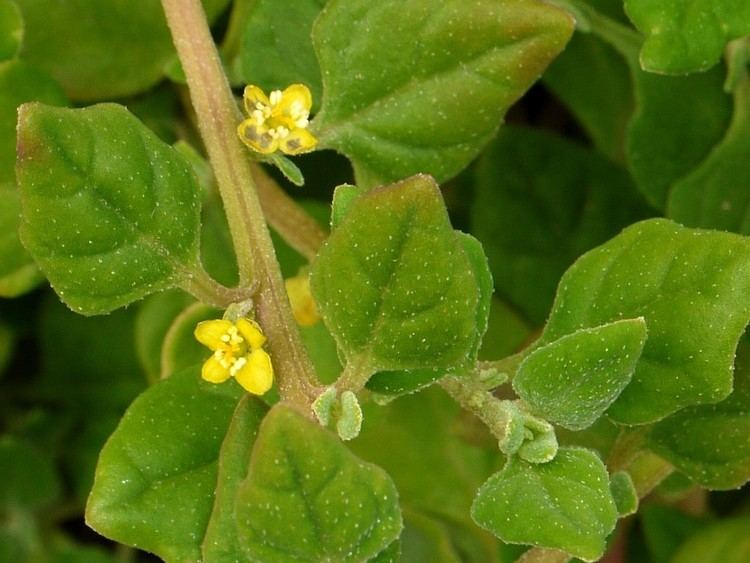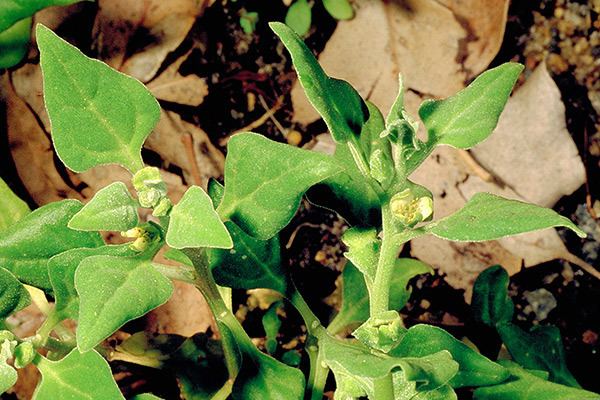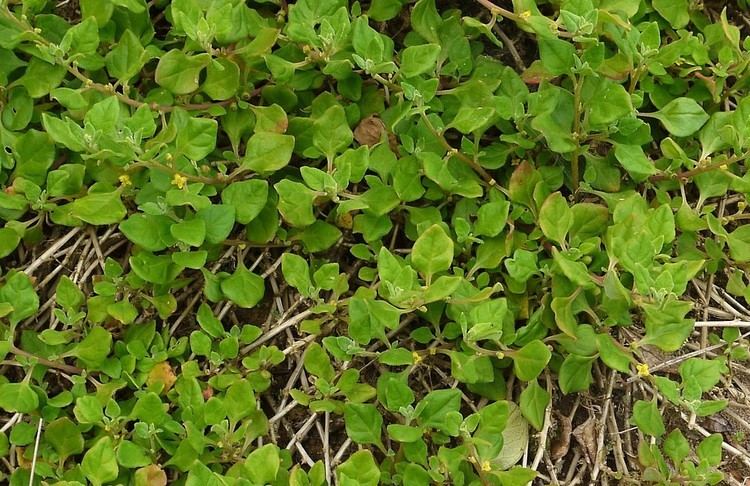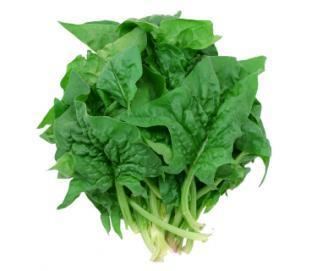Family Aizoaceae Species T. tetragonioides Protein 1.3 g (per 100 g) Magnesium 32 mg (per 100 g) | Scientific name Tetragonia tetragonioides Vitamin k 292 mcg (per 100 g) Iron 660 mcg (per 100 g) | |
 | ||
Energy 12.19 Calories (per 100 g) Similar Tetragonia, Malabar spinach, Common Purslane, Black salsify, Chard | ||
Tetragonia tetragonioides (previously T. expansa) is a leafy groundcover also known as Botany Bay spinach, Cook's cabbage, kōkihi (in Māori), New Zealand spinach, sea spinach, and tetragon. Its Australian names of warrigal greens and warrigal cabbage come from the local use of warrigal to describe plants that are wild (not farmed originally). It is native to Argentina, Australia, Chile, Japan, and New Zealand.

The species, rarely used by indigenous people as a leaf vegetable, was first mentioned by Captain Cook. It was immediately picked, cooked, and pickled to help fight scurvy, and taken with the crew of the Endeavour. It spread when the explorer and botanist Joseph Banks took seeds back to Kew Gardens during the latter half of the 18th century. For two centuries, T. tetragonioides was the only cultivated vegetable to have originated from Australia and New Zealand.

There are some indications that Māori did eat kōkihi perhaps more regularly. "To counteract the bitterness of the older leaves of this herb, the Māori boiled it with the roots of the convolvulus (pōhue)".

The species prefers a moist environment for growth. The plant has a trailing habit, and will form a thick carpet on the ground or climb though other vegetation and hang downwards. The leaves of the plant are 3–15 cm long, triangular in shape, and bright green. The leaves are thick, and covered with tiny papillae that look like waterdrops on the top and bottom of the leaves. The flowers of the plant are yellow, and the fruit is a small, hard capsule covered with small horns. The plant is a halophyte and grows well in saline ground.

Cultivation

It is grown for the edible leaves, and can be used as food or an ornamental plant for ground cover. As some of its names signify, it has similar flavour and texture properties to spinach, and is cooked like spinach. Like spinach, it contains oxalates; its medium to low levels of oxalates need to be removed by blanching the leaves in hot water for one minute, then rinsing in cold water before cooking. It can be found as an invasive plant in North and South America, and has been cultivated along the East Asian rim. It thrives in hot weather, and is considered an heirloom vegetable. Few insects consume it, and even slugs and snails do not seem to feed on it.
The thick, irregularly-shaped seeds should be planted just after the last spring frost. Before planting, the seeds should be soaked for 12 hours in cold water, or 3 hours in warm water. Seeds should be planted 5–10 mm (0.2–0.4 in) deep, and spaced 15–30 cm (5.9–11.8 in) apart. The seedlings will emerge in 10–20 days, and it will continue to produce greens through the summer.
